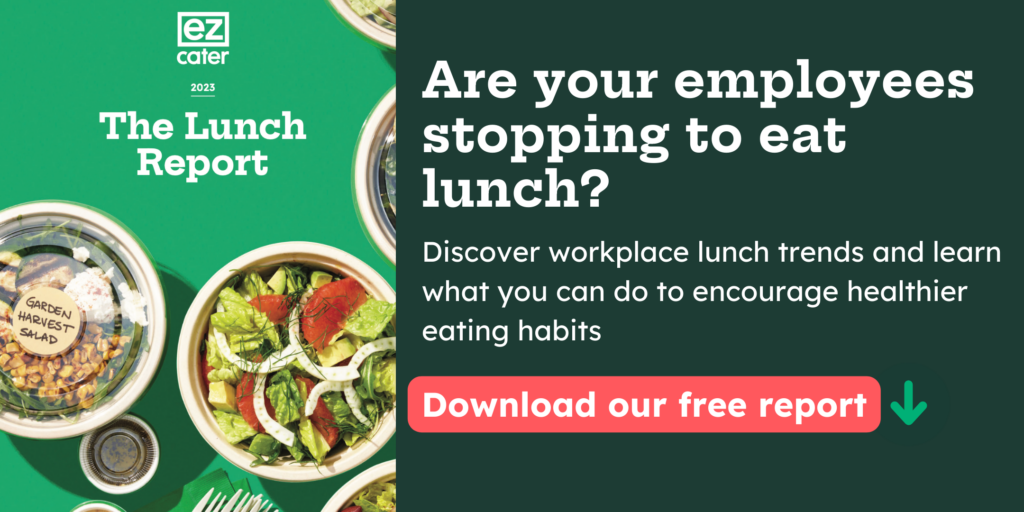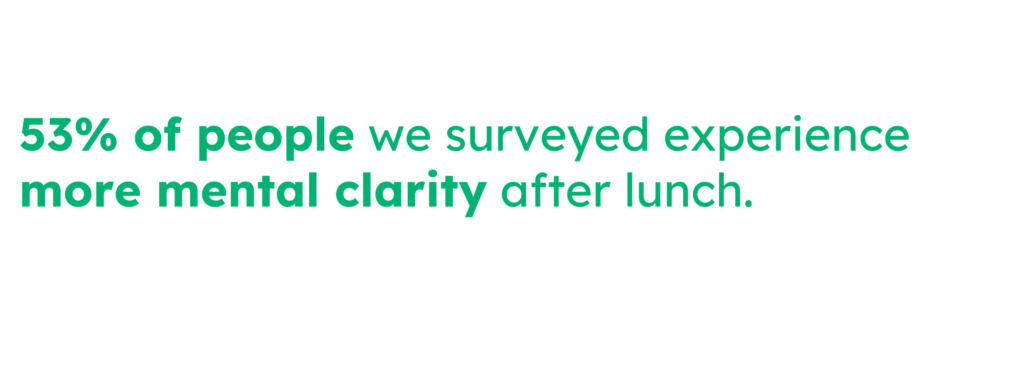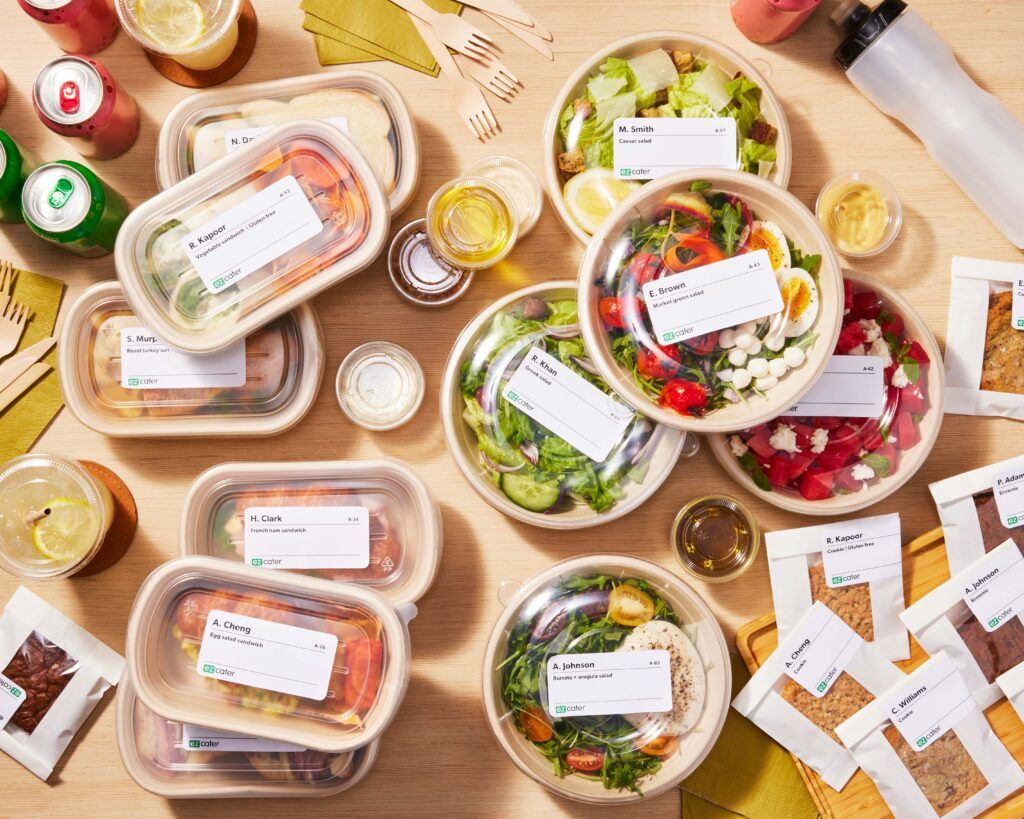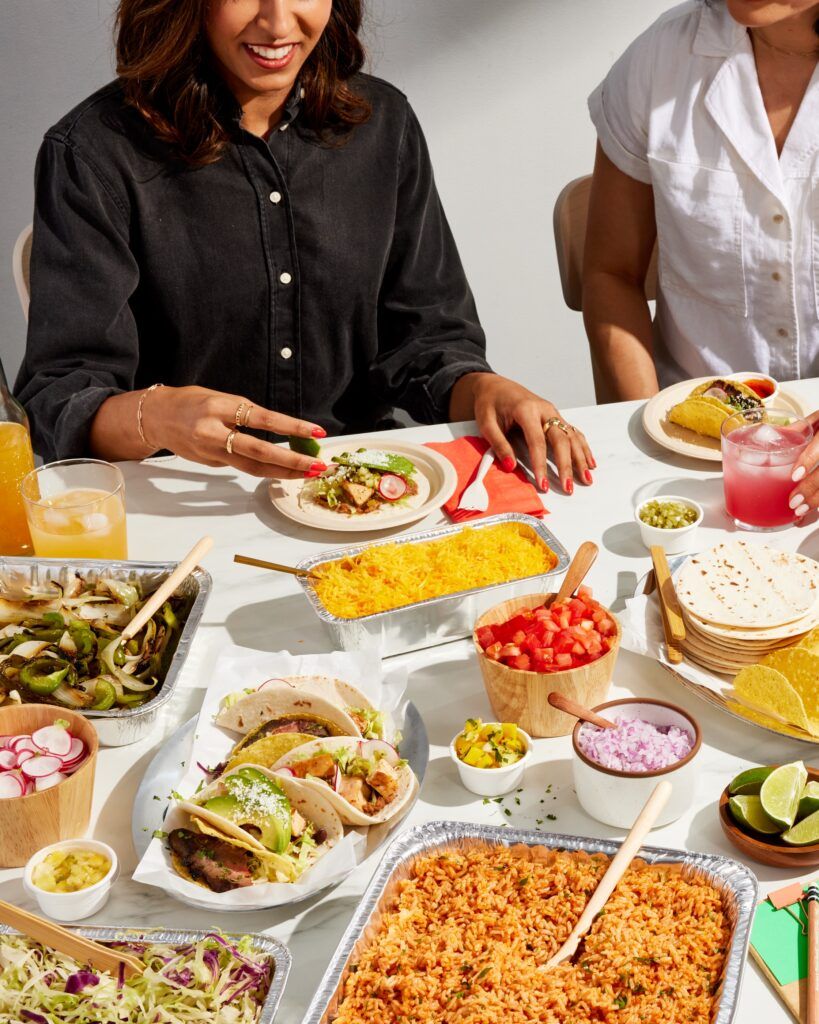Breakfast may be known as the most important meal of the day. But for millions of people — especially Gen Z and Millennials — lunch is king.
That means workers are taking the lunch break they deserve, right? Well, no. We surveyed 1,000 full-time employees and discovered that the tendency to pause for a midday meal is trending downward. Workers today are 40% more likely to say they never break for lunch than last year. It’s hurting their well-being and companies’ bottom line.
We published our feedback in ezCater’s 2023 Lunch Report, where we dive into how employees take their lunch breaks, and how that affects their health, productivity, and happiness at work. What we found was surprising: employees are skipping lunch for four big reasons — and a lack of appetite is not one of them.

The good news is that we can solve the lunch crunch. Companies can take proactive steps to encourage employees to walk away from their desks or workstations and eat a wholesome meal. We go over the “how” in our newest report, which you can download here. Before we get there, let’s dig deeper.
A lunch break isn’t just for soothing hunger pangs
Sure, lunch breaks revolve around food. But food isn’t the only important factor of a work lunch. If it were, desktop dining (eating a simple meal while working) would feel satisfying.
You likely don’t need us to tell you it doesn’t, and researchers at the University of Illinois agree. Not giving our brains a break causes fatigue, makes us pay less attention to tasks, and lowers our productivity. A meaningful work break is the antidote: 53% of people we surveyed experience more mental clarity after lunch.

The truth is, lunch breaks are nourishing for employees’ mental health. Workers who take midday breaks are less likely to suffer from psychological fatigue, physical fatigue, and sleep problems, according to a 2020 study published in the Journal of Epidemiology and Community Health. They can even help keep burnout rates low.

Lunch breaks are a win for everyone! So how did we get here?
Why dining al desko is on the rise
Workers know the perks of breaking for lunch. According to our research, 29% of employees even regularly block out a time for a lunch break on their calendar. Yet, as the morning goes on and things come up, 62% say they can’t use that time for a meal.
There are four big reasons why, beyond just not being hungry:
Clocking out earlier
23% of employees trade a lunch break for getting home as soon as possible. It’s why workplace happy hour isn’t as popular anymore, too.
Feeling swamped by the workload
22% of employees say they’re too busy to eat away from their workstations.
Too many meetings
20% of workers, Millennials especially, can’t grab a bite to eat because they’re stuck in meetings. And since the vast majority of people say eating during a meeting is a big no-no, the hunger pangs creep in.
Fearing judgment from bosses
Gen Z believes their higher-ups will look down on them for taking a work break.
These trends are worrying. Fortunately, we can reverse them.
3 tips for bringing back revitalizing lunch breaks
Already, great companies and people leaders are finding ways to encourage employees to take physically and mentally reinvigorating lunch breaks. They know it’s an investment that pays off: lunch breaks drive business results.
You can implement solutions at your organization, too. Here are three winning strategies to consider.
1. Encourage company-wide lunch breaks

Reframe lunch breaks not as a lull in the day that could be better spent getting stuff done, but as a much-needed opportunity to recharge batteries and boost productivity.
You could do this by encouraging all employees — including senior leadership — to block out 30 minutes from their schedule, even if it’s just every few days. It should be a time for no meetings, no client calls, and no work commitments. That will show employees (especially young Gen Z, who fear judgment) that you prioritize their mental health and physical well-being.
Feel free to adapt company-wide breaks to your organization’s culture. Will everyone lunch at the same time, or will each department set their work break? Are teams expected to lunch and learn together, or should things develop organically? You choose.
2. Offer free or subsidized meals

Would it surprise you to learn that 57% of employees say catered lunches are their most appreciated perk? Consider making their day with a free or subsidized meal. Every day or twice weekly, it solves so many problems.
Remember how one in five employees say they skip lunch because they’re swamped? Having catered food at work saves them time because they won’t have to go out to buy a meal. They can walk up to the food, grab a boxed lunch or plate, and dig in. No excuses, even if the work break is only 30 minutes.

No more relying on makeshift lunches, either. 68% of employees say they’ve had to scrounge up whatever snacks they could find into a full meal. We admire the resourcefulness, but hearty catered meals taste (and feel!) so much better.
Catered food at work will also win over any holdouts on your team. Who can resist the smell of delicious food lovingly made by a local restaurant? Not the 23% of people who want to clock out earlier. Reel in reluctant employees with these convenient meals.
3. Plan catered meals for hybrid “in-office” days

Food at work can work for your company even if teams are on a hybrid schedule.
Need everyone to come in for an important meeting or planning session? Announce that there will be food, pick a popular local restaurant (or a hidden gem!) that caters, and people will come. Yes, really. We found that 67% of hybrid workers say free lunch would impact their decision to work onsite, and that number is even higher for Gen Z, at a whopping 83%.
Once you have your employees all under one roof, use food to build company culture. Sure, Zoom, Microsoft Teams, and Slack make long-distance communication possible, but they don’t hold a candle to face-to-face conversations. Why not do team-building activities (like Two Truths One Lie, Twenty Questions, or trivia games) with lunch? Breaking bread with coworkers strengthens personal relationships, professional bonds, and that feeling of unity.
Teams that lunch together stay together.

Join the lunch break renaissance
We all lose if we let the lunch break become a nostalgic thing of the past. Employees will feel more isolated, less motivated, and increasingly burnt out, while employers risk losing top talent and seeing a drop in productivity.
Let’s make sure that doesn’t happen. Download our full Lunch Report to read our latest survey results and understand how your organization can promote a lunch break renaissance that benefits everyone.








